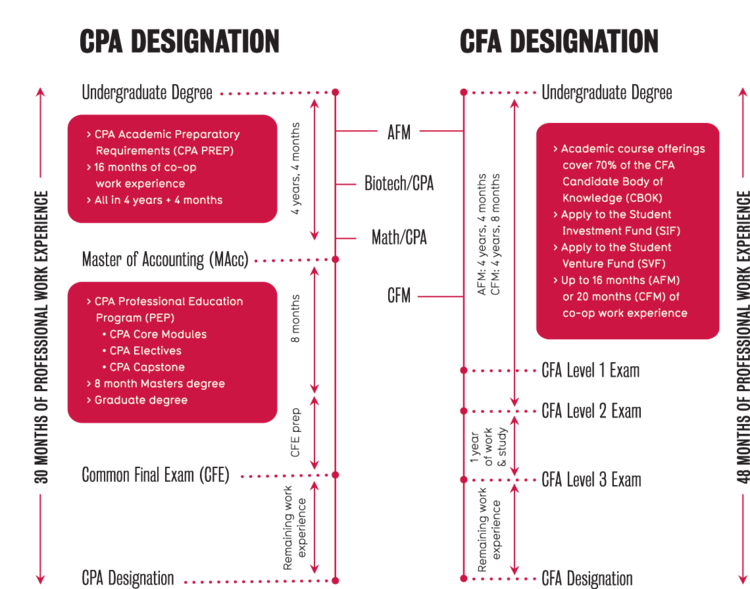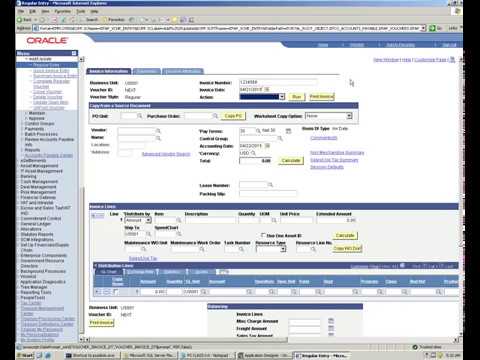What Is Audit Adjustment Adjust Misstatement? Types and Purposes
Contents:
- Adjusting Journal Entries | Accounting Student Guide
- Adjusting Journal Entry Definition: Purpose, Types, and Example
- Join over 140,000 fellow entrepreneurs who receive expert advice for their small business finances
- Top 3 Examples of Adjusting Entries
- Use Correcting Entries for Mistakes in Your Books


Payroll journal entries are used to record the compensation paid to employees. These entries are then incorporated into an entity’s financial statements through the general ledger. Ideally, you should book these journal entries before you make any big financial decisions or evaluate your finances. If the entries aren’t booked, it’s easy to forget about obligations and get a skewed picture of your financial position.

https://1investing.in/ owners love Patriot’s award-winning payroll software. Get up and running with free payroll setup, and enjoy free expert support. Try our payroll software in a free, no-obligation 30-day trial.
Adjusting Journal Entries | Accounting Student Guide
That kind of adjustment should only be for a material amount, or the client could be buried under a rolldown of small adjustments that have no impact on its financial statements. An audit adjustment is also a proposed correction to the general ledger that outside auditors carry out. The auditors may reference the proposed correction on evidence found in their audit steps or procedures or want to classify amounts into different accounts again.

This occurs when a business receives payment or pays in advance of the service or product being supplied. The parties need to reflect this prepayment on their respective books being made in advance of the service or product being provided. Accrued expenses work the same way as accrued revenue, just the other way around. Suppose your business must pay a utility expense for the amount of electricity you used within a month. Your accounting books and records should reflect this utility expense at the month-end period rather than when you receive the utility bill in the next month.
Adjusting Journal Entry Definition: Purpose, Types, and Example
The point where an project accounting entry becomes necessary is when an Expense is incurred, but the company has not been billed yet. The Revenue Recognition principle is part of Generally Accepted Accounting Principles . The principle determines how and when revenue is “recognized.” In other words, it determines how and when a company puts revenue on its income statement.
In this article, we shall first discuss the purpose of adjusting entries and then explain the method of their preparation with the help of some examples. For the next six months, you will need to record $500 in revenue until the deferred revenue balance is zero. Depreciation expense and accumulated depreciation will need to be posted in order to properly expense the useful life of any fixed asset. An allowance for doubtful accounts is a contra-asset account that reduces the total receivables reported to reflect only the amounts expected to be paid. Capitalized interest is the cost of borrowing to acquire or construct a long-term asset, which is added to the cost basis of the asset on the balance sheet. This solution also simplifies the process of handling prepaid amounts.
- Adjusting entries are journal entries that are made at the end of an accounting period to adjust the accounts to accurately reflect the revenues and expenses of the current period.
- Streamline and automate detail-heavy reconciliations, such as bank reconciliations, credit card matching, intercompany reconciliations, and invoice-to-PO matching all in one centralized workspace.
- In this way, you can change or add information to the journal entry in order to make it more accurate and appropriate for your current situation.
This gives accounting teams more time to analyze and book any necessary adjusting journal entries. This is likely oversimplifying, since companies may have hundreds or thousands of adjusting journal entries to make each period, but it gives an overview of the process needed for each entry. In addition, adjusting journal entries should include supporting documentation, links to applicable policies and procedures, and be properly reviewed and approved before being posted.
Check out our article on adjusting journal entries to learn how to do it yourself. Recording transactions in your accounting software isn’t always enough to keep your records accurate. If you use accrual accounting, your accountant must also enter adjusting journal entries to keep your books in compliance. By recording these entries before you generate financial reports, you’ll get a better understanding of your actual revenue, expenses, and financial position. Adjusting entries, also called adjusting journal entries, arejournal entriesmade at the end of a period to correct accounts before thefinancial statements are prepared.
Join over 140,000 fellow entrepreneurs who receive expert advice for their small business finances
Simply put, that your financial statements provide accurate data. Accrued RevenueAccrued revenues are the company’s revenue in the normal course of business after selling the goods or providing services to a third party. Instead, it is shown as an asset in the balance sheet of the company. If your cash account and bank statement are showing different figures, it’s time to check each transaction on both sides. This way, you’ll see whether the bank made a mistake or recorded a transaction in a different month than you did. Often, adding a journal entry (known as a “correcting entry”) will fix an accounting error.

In such a case, the adjusting journal entries are used to reconcile these differences in the timing of payments as well as expenses. Without adjusting entries to the journal, there would remain unresolved transactions that are yet to close. When a company owns Fixed Assets , over time those assets lose value.
In this case, you may have an arrangement with a supplier to earn a quarterly rebate based on your overall spend with that supplier. Imagine the supplier’s policy is to pay the rebate at the end of the year. Then, from an accounting perspective, this may need to be accrued for when the rebate is earned, not when it is received. To mitigate financial statement risk and increase operational effectiveness, consumer goods organizations are turning to modern accounting and leading best practices. Simply sticking with ‘the way it’s always been done’ is a thing of the past. Seamlessly integrate with all intercompany systems and data sources.
- When expenses are prepaid, a debit asset account is created together with the cash payment.
- Whereas you’d record a depreciation entry for a tangible asset, amortization is used to stretch the expense of intangible assets over a period of time.
- This method follows the matching principle of accounting, which states that revenues and expenses are recorded when they happen, instead of when payment is received or made.
- The point where an adjusting entry becomes necessary is when Revenue is earned, but the customer has not been billed yet.
- Usually, Liability accounts, Revenue accounts, Equity Accounts, Contra-Expense & Contra-Asset accounts tend to have the credit balance.
For example, a business has a delivery van for which $200 of depreciation expense is recorded each month. This is not captured in the day-to-day accounting transactions. It is done as an adjusting entry once a month to capture the expense. Your general ledger is the backbone of your financial reporting. It’s used to prepare financial statements like your income statement, balance sheet, and cash flow statement.
During the accounting period, the office supplies are used up and as they are used they become an expense. When office supplies are bought and used, an adjusting entry is made to debit office supply expenses and credit prepaid office supplies. Adjusting entries are made at the end of an accounting period after a trial balance is prepared to adjust the revenues and expenses for the period in which they occurred.
Some transactions are paid in advance of the revenue being earned or the expense being incurred . Some transactions are paid after the revenue is earned or after the expense is incurred . Every journal entry in the general ledger will include the date of the transaction, amount, affected accounts with account number, and description. The journal entry may also include a reference number, such as a check number, along with a brief description of the transaction.
How to Record Accrued Payroll and Taxes – The Motley Fool
How to Record Accrued Payroll and Taxes.
Posted: Fri, 05 Aug 2022 07:00:00 GMT [source]
Given these definitions, the difference between the two types of trial balance are the adjusting entries made into the accounting system after the unadjusted trial balance is prepared. They occur at the end of an accounting period to properly count your income and expenses that have not yet been recorded in the accounting ledger. Any difference indicates some error in entries, ledger, or calculations.
What is a Journal Entry in Accounting? – Investment U
What is a Journal Entry in Accounting?.
Posted: Thu, 16 Sep 2021 07:00:00 GMT [source]
Adjusting journal entries are used to reconcile transactions that have not yet closed, but which straddle accounting periods. These can be either payments or expenses whereby the payment does not occur at the same time as delivery. The purpose of adjusting entries is to convert cash transactions into the accrual accounting method. Accrual accounting is based on the revenue recognition principle that seeks to recognize revenue in the period in which it was earned, rather than the period in which cash is received.
An adjusting journal entry occurs at the end of a reporting period to record any unrecognized income or expenses for the period. Journal entriesand records are needed to track the evolution of your business accounts. If not, mistakes and incorrect entries will rear their ugly head within your financial statements.
Purchased land costing $50,000 and buildings costing $400,000. Paid $100,000 in cash and signed a note payable for the balance. For example, if a company bought a car, its assets would go up by the value of the car.
No manually inputting journal entries, thinking twice about categorizing a transaction, or scanning for missing information—someone else will do that all for you. Sometimes corporations prepare bonds on one date but delay their issue until a later date. Any investors who purchase the bonds at par are required to pay the issuer accrued interest for the time lapsed. The company assumed the risk until its issue, not the investor, so that portion of the risk premium is priced into the instrument.
